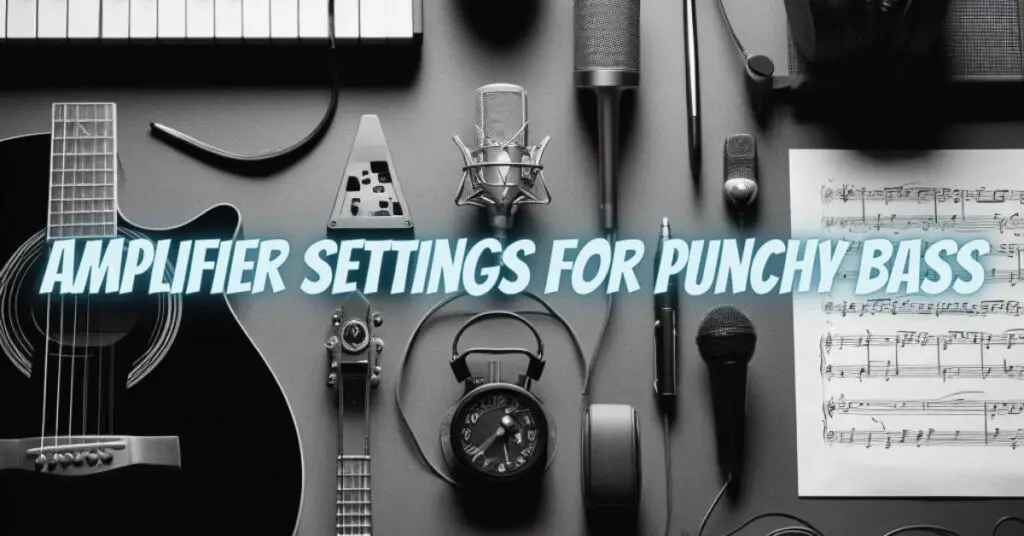A punchy bass is the heartbeat of many music genres, providing rhythm and power to the overall sound. Achieving that sought-after punch in your bass tone requires more than just skillful playing; it involves mastering the settings on your bass amplifier. In this article, we’ll explore the essential bass amp settings and techniques that can help you craft a punchy, dynamic low-end sound that stands out in any mix.
Understanding the Basics
Before we dive into the specific settings, let’s briefly discuss some fundamental aspects of bass amplifiers:
- Gain: The gain control adjusts the input sensitivity of your amplifier. It determines how hard you drive the amp. Higher gain settings can add saturation and warmth, but excessive gain can lead to unwanted distortion.
- Equalization (EQ): The EQ section typically includes controls for bass, midrange, and treble frequencies. Proper EQ adjustment is critical for sculpting your bass tone and achieving punchy bass.
- Volume: The volume control sets the overall loudness of your amplifier. Balancing the volume is crucial, ensuring that your bass is heard clearly in the mix without overpowering other instruments.
Punchy Bass Amp Settings
Now, let’s explore the specific amp settings and techniques to create punchy bass:
- Start with Flat Settings: When setting up your bass amp, begin with all EQ controls (bass, midrange, treble) set to a flat or neutral position. This provides a clean slate to work from.
- Boost the Bass: To add punch to your bass sound, boost the bass EQ control. Increasing the bass frequencies enhances the low-end, giving it a solid foundation and a more pronounced punch.
- Tame the Mids: Reducing the midrange frequencies slightly can help create a cleaner, less boomy sound. However, don’t cut too much midrange, as it contributes to the definition and character of your bass tone.
- Enhance High Frequencies: A slight boost in treble frequencies can add clarity and articulation to your bass tone. This can make your bass lines more defined and “punch” through the mix.
- Adjust Gain Sensibly: Set the gain to a level that allows your playing dynamics to shine without excessive distortion. For punchy bass, aim for a clean and powerful tone rather than excessive grit.
- Consider the Room: Be mindful of the acoustics in your playing environment. The room’s characteristics can impact the way your bass sound is perceived. Make adjustments as needed to suit the room’s acoustics.
- Experiment with Pickup Balance: If your bass has multiple pickups, experiment with their balance. The pickup selection can influence the tonal character and punch of your bass.
- Use Compression: Consider adding a touch of compression to your signal chain. Compression helps control the dynamics and can make the punchy elements of your bass more consistent.
- Play with Fingers or a Pick: The choice of playing technique can significantly affect the punchiness of your bass sound. Playing with fingers typically produces a rounder and punchier tone, while using a pick may provide a more aggressive attack.
- Practice Dynamic Playing: Work on your dynamic playing technique. Varying your playing intensity and articulation can emphasize the punchiness of your bass in different musical contexts.
- Listen and Adjust: Continuously listen to your bass in the mix and make adjustments as needed. Finding the perfect balance is an ongoing process, so trust your ears.
Crafting a punchy bass tone is a combination of precise settings, thoughtful playing, and careful listening. By mastering your bass amp settings and employing these techniques, you can achieve a dynamic and impactful low-end that stands out in any musical genre. Experimentation, practice, and attentive adjustments will help you develop a signature punchy bass sound that enhances your music and makes it truly memorable.


